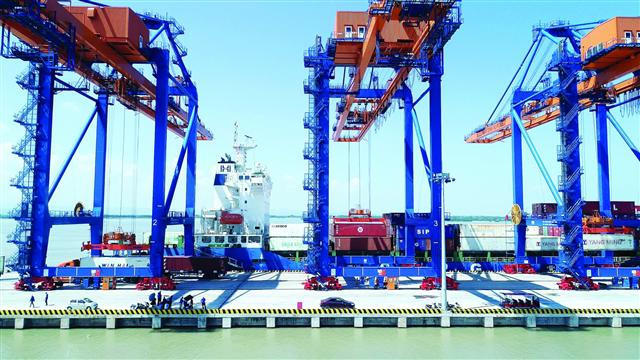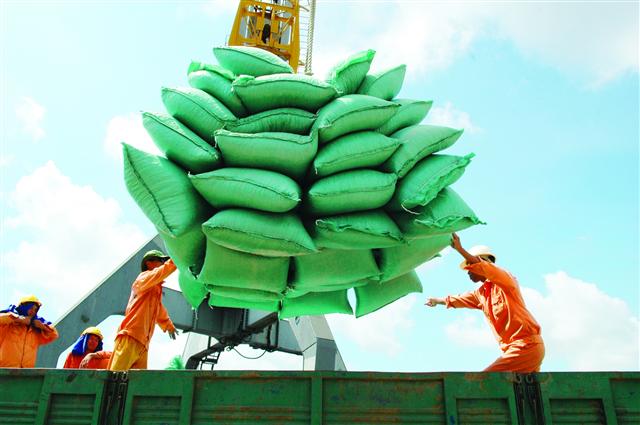Vietnam’s growing trade deficit is actually good news, economists say
Vietnam’s growing trade deficit is actually good news, economists say
Vietnam imported US$369 million more than it exported in the first five months of this year, but economists say the resulting trade deficit is actually good news.
Imports serving domestic production
According to the Ministry of Industry and Trade, Vietnam imported US$2 billion more than it exported in May, taking the country’s trade deficit to US$369 million in the first five months of this year. In the first five months of last year, Vietnam exported US$3.87 billion more than it imported.

The Ministry of Industry and Trade attributed increases in the country’s import value to the recovery of domestic production and demand
|
The ministry attributed the increased import value to increased domestic production in response to recovering demand. Inputs and equipment for manufacturing accounted for nearly 94 percent of the total imports, and consumer goods for the rest.
Specifically, imports totaled US$28 billion in May (up 0.8 percent from April), taking the total to an estimated US$131.31 billion in the first five months of 2021, up 36.4 percent from the same period last year.
Imports mainly included goods serving domestic production, such as computers, electronic products and components (up 24.7 percent), machinery, equipment, tools and spare parts (up 35.9 percent), and phones and accessories (up 51.3 percent).
Since 2012, Vietnam has been reporting trade surpluses with many countries in light of export growth. But Pham Tat Thang, former Director of the Ministry of Industry and Trade’s Vietnam Institute of Industrial and Trade Policy and Strategy, said the trade deficit is not worrisome, as it shows that Vietnam is resuming production, including connection with supply chains that were broken by the Covid-19 pandemic.
Tran Thanh Hai, Deputy Director of the Ministry of Industry and Trade’s Agency of Foreign Trade, echoed the same remark, saying the imports grew as a result of domestic and export production. Electronics, textile-garment and leather and footwear industries, for example, are experiencing a strong growth and therefore increasing demand for imported production materials.
Although the fourth wave of the Covid-19 pandemic broke out in Vietnam at the end of April, partly affecting production in many industries including textiles and garments, leather and footwear, electronics, and mobile phones, manufacturers need imported materials to fulfill orders, and increased import value is a good sign, Hai said. While Vietnam’s goal is to keep its trade deficit per export value below four percent, the US$369 million trade deficit accounted for less than 0.3 percent of the country’s first-five-month export value of almost US$131 billion.
Optimistic foreign trade outlook
The Ministry of Industry and Trade is forecasting continued import and export growth in the coming months as free trade agreements (FTAs) are gradually implemented in a more comprehensive and effective manner. Those agreements will continue to create conditions for Vietnamese goods to enter partner markets at preferential tariffs, including the Comprehensive and Progressive Agreement for Trans-Pacific Partnership (CPTPP), the EU-Vietnam Free Trade Agreement (EVFTA) and the UK-Vietnam Free Trade Agreement (UKVFTA). Export prices for various goods are also on the rise, especially for Vietnam’s key export commodities such as rice, coffee, tea, rubber and pepper, according to the ministry.
|
However, according to the ministry, foreign trade still faces barriers, such as interrupted supply chains, uneven market recovery, increased logistics and transportation costs, higher raw material costs, and continuing changes in food safety certification regulations of farm produce importers.
The industry and trade sector has set a 4-5 percent export growth target this year and a continued trade surplus to help the country achieve its 2021 gross domestic product (GDP) growth target of 6.5 percent.
To reach the target, Vietnam will make better use of FTAs, especially the CPTPP and EVFTA, to boost exports to potential markets and create a driving force for sustainable exports in 2021.




























